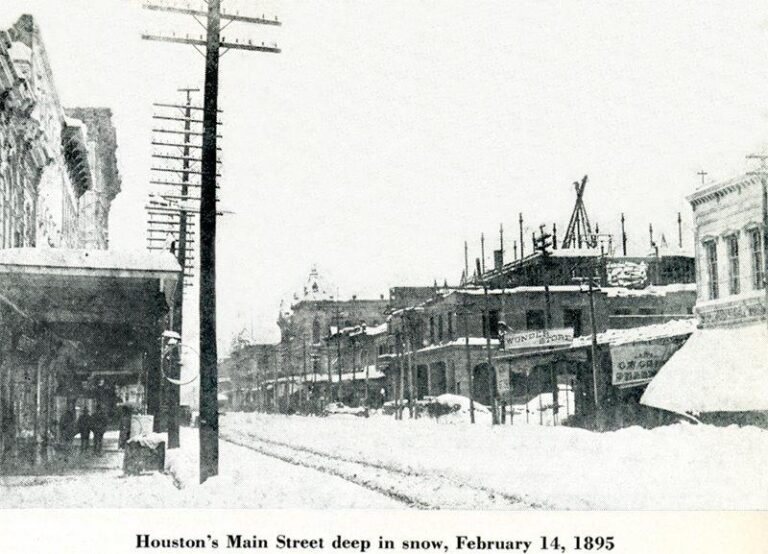Houston’s Rare Snowfall Phenomena: A Historical and Practical Overview
Memorable Snowfall Episodes That Redefined Houston’s Winter Experience
Although Houston is predominantly recognized for its hot and humid climate, the city has witnessed several extraordinary snow events that have significantly altered its winter identity. Among these, the February 2021 winter storm stands as a landmark occurrence, depositing over 4 inches of snow and causing widespread disruption. This rare weather event halted daily activities, forced closures of schools and government offices, and exposed vulnerabilities in the city’s infrastructure. The aftermath prompted a renewed focus on enhancing Houston’s readiness for extreme weather fluctuations.
Going further back, the December 1989 snowfall remains a standout moment, with nearly 3 inches of accumulation marking one of the highest totals in recent memory. Other lighter snowfalls, such as those in 2017 and 2014, also challenged the city’s typically mild winters, causing traffic delays and temporary school shutdowns. The table below highlights these key snowfall events, detailing their snowfall depths and the effects they had on Houston’s urban environment:
| Year | Snowfall (inches) | Consequences |
|---|---|---|
| 2021 | 4.2 | Complete city shutdown, power outages |
| 1989 | 2.9 | Decade’s record snowfall |
| 2017 | 1.5 | Traffic jams, school closures |
| 2014 | 1.2 | Light snow affecting holiday travel |
The Science Behind Houston’s Infrequent Snowfall Events
Snowfall in Houston is an uncommon phenomenon, primarily due to the city’s warm, humid Gulf Coast climate. These rare snow events occur when a combination of specific atmospheric conditions align perfectly. A key factor is the intrusion of a strong cold front pushing Arctic air southward into the region. When this cold air mass converges with moisture-rich air from the Gulf of Mexico, the conditions become favorable for snow rather than rain. Additionally, the presence of an upper-level trough can intensify atmospheric lift, further promoting snowfall.
Critical meteorological elements that contribute to Houston’s snowfalls include:
- Extended periods of Arctic air lowering temperatures below freezing.
- High moisture content from the Gulf providing necessary precipitation.
- Upper atmospheric disturbances increasing instability.
- Absence of warm air layers that would otherwise melt snowflakes before ground contact.
| Year | Temperature Range (°F) | Snowfall (inches) |
|---|---|---|
| 1895 | 23 – 32 | 8.2 |
| 1930 | 25 – 34 | 5.4 |
| 2004 | 28 – 36 | 3.0 |
| 2021 | 30 – 37 | 1.5 |
Essential Preparedness Strategies for Houston Residents During Snowfall
Stay updated and prepare in advance. Given the rarity of snow in Houston, it’s vital for residents to keep abreast of weather forecasts through reliable outlets like Houston Public Media and the National Weather Service. Since local infrastructure is not typically designed for snow, households should assemble emergency kits containing warm apparel, blankets, flashlights, batteries, and non-perishable foods. Vehicles should be stocked with winter necessities such as ice scrapers and additional windshield washer fluid to navigate potentially icy roads safely.
Implement safety precautions to safeguard your home and health. To prevent frozen pipes, insulate exposed plumbing and allow faucets to drip during freezing nights. Limit travel to essential trips only, as road conditions can deteriorate rapidly and emergency services may face delays. Keep mobile devices fully charged and establish communication plans with family or neighbors, especially for those living alone or caring for seniors.
How Houston’s Authorities Manage Snowfall Emergencies
When snow threatens Houston, city officials activate comprehensive response protocols aimed at minimizing disruption and ensuring public safety. This includes deploying snow removal machinery on major roads and critical infrastructure points to maintain accessibility. Emergency warming centers are opened, and timely public advisories are broadcasted via social media, local radio, and television. Coordination with utility providers is intensified to mitigate power outages caused by ice accumulation, prioritizing vulnerable populations.
Public communication is a cornerstone of the city’s strategy, with clear guidance on travel restrictions, school closures, and emergency contacts. The Houston Office of Emergency Management works closely with neighboring counties to share resources and information. Below is an outline of the primary phases in Houston’s snowfall response:
- Preparation: Staging equipment and allocating resources to ensure readiness.
- Activation: Treating roads and deploying emergency personnel to maintain safety.
- Recovery: Assessing damage and repairing infrastructure to restore normal operations.
| Phase | Action | Goal |
|---|---|---|
| Preparation | Equipment staging and resource allocation | Ensure readiness |
| Activation | Road treatment and emergency service deployment | Maintain public safety |
| Recovery | Damage assessment and infrastructure repair | Restore normalcy |
Conclusion: Preparing Houston for Future Winter Weather Challenges
As Houston anticipates potential snowfall, reflecting on the city’s most impactful snow events provides valuable insight into what residents might face. While heavy snow remains an infrequent visitor to this Gulf Coast city, its effects can be profound and long-lasting. Staying informed, preparing adequately, and understanding the city’s response mechanisms are crucial steps to ensure safety and resilience when winter weather strikes.




